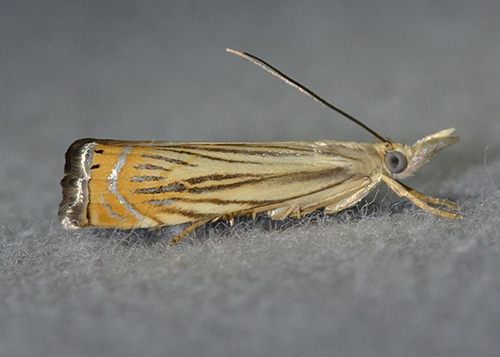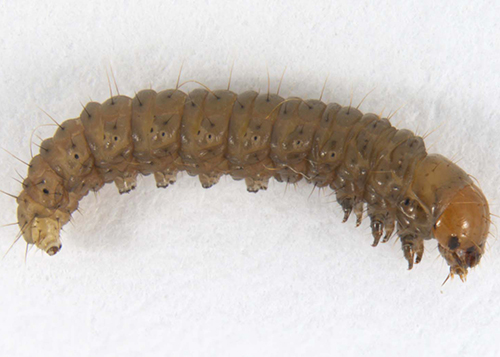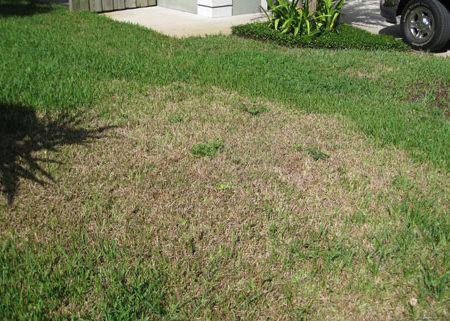Integrated Pest Management
Sod Webworms and Cranberry Girdler
Crambus spp.; Chrysoteuchia topiaria
Pest Description
- complex of multiple species of moths
- adults: 3/4 inch wingspan; snout protruding forward; forewings dull colored and striped with silver, gold, yellow, brown and black
- larvae: 3/4 – 1 inch; vary in color (beige, gray, brown or green); most are covered with dark spots and coarse hairs; typically associated with green frass and webbing
Host Plants, Diet & Damage
- larvae feed on a number of grasses
- larvae clip grass blades at night just above the crown leaving areas of turf thinning
- subterranean sod webworm larvae, specifically, feed on crowns and roots causing similar damage as white grubs
- severe infestations can cause irregular turfgrass patches
Biology, Life Cycle & Damaging Life Stage
- overwinter as larvae in silk-lined chambers in thatch
- larvae become active in spring
- one or two generations depending on species
- moths may emerge summer through fall
- subterranean sod webworms have one generation and moths emerge late spring to early summer
- female moths drop eggs over turfgrass in the evenings
- larvae are the damaging life stage
IPM Recommendations
- Monitor larvae with a soapy-water flush, and adult flights just above the turfgrass in the evenings.
- Avoid drought-stressed turf and consider endophyte-enhanced turfgrass.
- Apply a biopesticide containing entomopathogenic nematodes or Bacillus thuringiensis to suppress populations.
- Apply a pesticide (carbamate; pyrethroid; organophosphate) when larvae are present.




